
The Globe Theatre was a theatre in London associated with William Shakespeare. It was built in 1599 at Southwark, close to the south bank of the Thames, by Shakespeare's playing company, the Lord Chamberlain's Men. It was destroyed by fire on 29 June 1613. A second Globe Theatre was built on the same site by June 1614 and stayed open until the London theatre closures of 1642. As well as plays by Shakespeare, early works by Ben Jonson, Thomas Dekker and John Fletcher were first performed here.
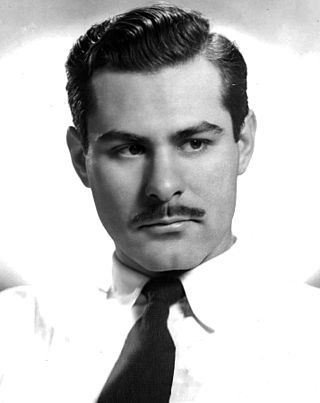
Samuel Wanamaker,, was an American actor and director who moved to the United Kingdom after becoming fearful of being blacklisted in Hollywood due to his communist views in the 1950s. He became extensively involved in English theater, while continuing film and television work, eventually returning to some Hollywood productions while remaining based in the UK. There, he is also credited as the person most responsible for saving The Rose Theatre, which led to the modern recreation of Shakespeare's Globe Theatre in London, where he is commemorated in the name of the Sam Wanamaker Playhouse, the site's second theatre. He was awarded an honorary knighthood for his work.
John Webster was an English Jacobean dramatist best known for his tragedies The White Devil and The Duchess of Malfi, which are often seen as masterpieces of the early 17th-century English stage. His life and career overlapped with Shakespeare's.
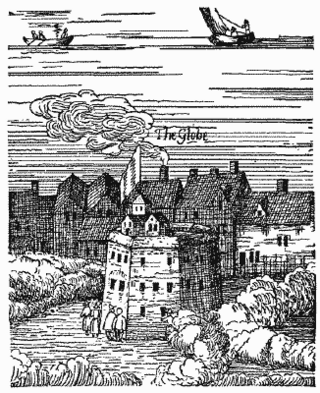
The Rose was an Elizabethan theatre. It was the fourth of the public theatres to be built, after The Theatre (1576), the Curtain (1577), and the theatre at Newington Butts – and the first of several playhouses to be situated in Bankside, Southwark, in a liberty outside the jurisdiction of the City of London's civic authorities. Its remains were excavated by archaeologists in 1989 and are listed by Historic England as a Scheduled Monument.
The Lord Chamberlain's Men was a company of actors, or a "playing company", for which William Shakespeare wrote during most of his career. Richard Burbage played most of the lead roles, including Hamlet, Othello, King Lear, and Macbeth. Formed at the end of a period of flux in the theatrical world of London, it had become, by 1603, one of the two leading companies of the city and was subsequently patronized by James I.
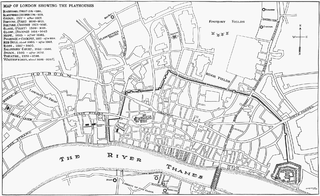
Blackfriars Theatre was the name given to two separate theatres located in the former Blackfriars Dominican priory in the City of London during the Renaissance. The first theatre began as a venue for the Children of the Chapel Royal, child actors associated with the Queen's chapel choirs, and who from 1576 to 1584 staged plays in the vast hall of the former monastery. The second theatre dates from the purchase of the upper part of the priory and another building by James Burbage in 1596, which included the Parliament Chamber on the upper floor that was converted into the playhouse. The Children of the Chapel played in the theatre beginning in the autumn of 1600 until the King's Men took over in 1608. They successfully used it as their winter playhouse until all the theatres were closed in 1642 when the English Civil War began. In 1666, the entire area was destroyed in the Great Fire of London.
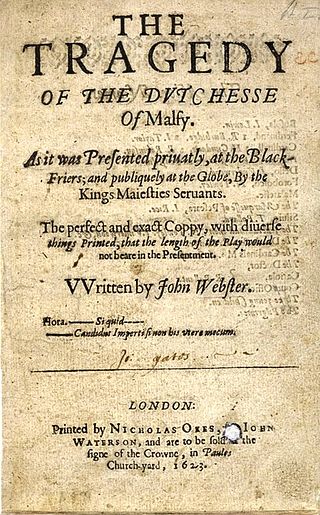
The Duchess of Malfi is a Jacobean revenge tragedy written by English dramatist John Webster in 1612–1613. It was first performed privately at the Blackfriars Theatre, then later to a larger audience at The Globe, in 1613–1614.

The Knight of the Burning Pestle is a play in five acts by Francis Beaumont, first performed at Blackfriars Theatre in 1607 and published in a quarto in 1613. It is the earliest whole parody play in English. The play is a satire on chivalric romances in general, similar to Don Quixote, and a parody of Thomas Heywood's The Four Prentices of London and Thomas Dekker's The Shoemaker's Holiday. It breaks the fourth wall from its outset.

Shakespeare's Globe is a realistic true-to-history reconstruction of the Globe Theatre, an Elizabethan playhouse first built in 1599 for which William Shakespeare wrote his plays. Like the original, it is located on the south bank of the River Thames, in Southwark, London. The reconstruction was completed in 1997 and hosts a variety of theatrical productions, while also concentrating on Shakespeare's work. Part of the Globe's complex also hosts the Sam Wanamaker Playhouse for smaller, indoor productions, in a setting which also recalls the period.
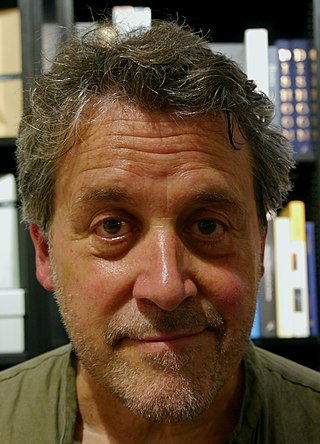
Dominic Dromgoole is an English theatre director and writer about the theatre who has recently begun to work in film. He lives in Hackney with his three daughters and partner Sasha Hails.

The American Shakespeare Center (ASC) is a regional theatre company located in Staunton, Virginia, that focuses on the plays of William Shakespeare; his contemporaries Ben Jonson, Beaumont and Fletcher, Christopher Marlowe; and works related to Shakespeare, like James Goldman's The Lion in Winter and Bob Carlton's Return to the Forbidden Planet.

The Cockpit was a theatre in London, operating from 1616 to around 1665. It was the first theatre to be located near Drury Lane. After damage in 1617, it was named The Phoenix.
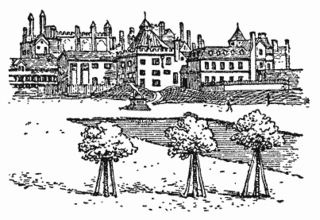
The Cockpit-in-Court was an early theatre in London, located at the Palace of Whitehall, next to St. James's Park, now the site of 70 Whitehall, in Westminster.
Joseph Taylor was a 17th-century English actor. As the successor of Richard Burbage as the leading actor with the King's Men, he was arguably the most important actor in the later Jacobean and the Caroline eras.
John Orrell was a British author, theatre historian, and English professor at the University of Alberta. The New York Times described him as the "historian whose intellectual detective work laid the groundwork for the 1997 re-creation of Shakespeare’s original Globe Theater."

The Gdańsk Shakespeare Theatre is a Shakespearean theatre in Gdańsk, Poland. It is built on the site of a 17th-century theatre, known as the Fencing School, where English travelling players performed works of English Renaissance theatre. The leading figure in the project to construct the new theatre is Jerzy Limon, a founder of the Gdańsk Shakespeare Festival.
Jessica Swale is a British playwright, theatre director and screenwriter. Her first play, Blue Stockings, premiered at Shakespeare's Globe in 2013. It is widely performed by UK amateur companies and is also studied on the Drama GCSE syllabus. In 2016, her play Nell Gwynn won the Olivier Award for Best New Comedy, after it transferred from the Globe to the West End, starring Gemma Arterton as the eponymous heroine. She also wrote and directed the feature film Summerland (2020).
Ralph Alan Cohen is an American educator, scholar theatre director, and academic entrepreneur. He is the co-founder and Senior Advisor of the American Shakespeare Center, a theater company located in Staunton, Virginia. In 2001, as Executive Director of the ASC, he was also Project Director for the building of the Blackfriars Playhouse, a recreation of the Blackfriars Theatre, England’s first purpose-built indoor theatre, and home to Shakespeare’s company, the King’s Men until the closing of the theatres in 1642.
Joan Iyiola is a British-Nigerian actress, writer and producer based in London. She is best known for playing the title role in The Duchess of Malfi at the RSC, and Dọlápọ̀ Is Fine.
Giles Cooper is a British actor. He is best known for playing Fred Silvester in the 2018 UK Tour of This House and food writer Nigel Slater in the 2019 London premiere of Toast.













